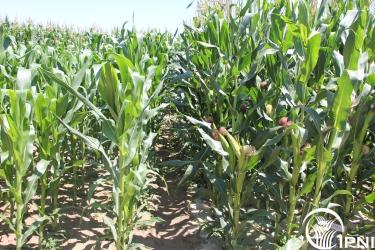30 Sep 2018
Sensitivity analysis of crop yields, soil water contents and nitrogen leaching to precipitation, management practices and soil hydraulic properties in semi-arid and humid regions of Canada using the DSSAT model
He WT., Yang JY., Zhou W., Drury CF., Yang XM, Reynolds WD, Wang H., He P., Li ZT. Sensitivity analysis of crop yields, soil water contents and nitrogen leaching to precipitation, management practices and soil hydraulic properties in semi-arid and humid regions of Canada using the DSSAT model. Nutrient Cycling in Agroecosystems, 2016, 106:201:215.
 Rain collection system in maize showed great benefit in Gansu
Rain collection system in maize showed great benefit in Gansu
Sensitivity analysis of DSSAT outputs to inputs parameters was conducted in two Canadian locations: one for spring wheat in the semi-arid Prairies in Swift Current, Saskatchewan and the second for maizeunder humid conditions in Woodslee, Ontario. The nominal range sensitivity method, regression, and graphical analysis were used to assess the sensitivity of crop yields, biomass, soil inorganic N, nitrate leaching and soil water contents to soil hydraulic properties, management practices and precipitation. Wheat and maize yields were highly sensitive to soil water drainage upper limit, fertilizer nitrogen rate and precipitation at both locations. At Swift Current, very high soil nitrate leaching (25–140 kg N/ha) was found in 1994, 1996, 1997 and 2003 as affected by high precipitation in the previous years (i.e., 1993, 1995, 1996 and 2002). Soil N leaching was greater in 2011, a wet year at Woodslee, Ontario, with 20–85 kg N ha-1 than in the normal rainfall years of 2010 and 2012. Based on the fitted N response curves, the maximum yields were obtained at 112 kg N ha-1 for spring wheat at Swift Current and 150–210 kg N/ha for maize at Woodslee. The optimum planting date for maize at Woodslee was predicted to be from late May to early June. Sensitivity analysis was found to be useful in assessing the influence of crop management practices, soil parameters and precipitation on crop production and potential environment risks.




